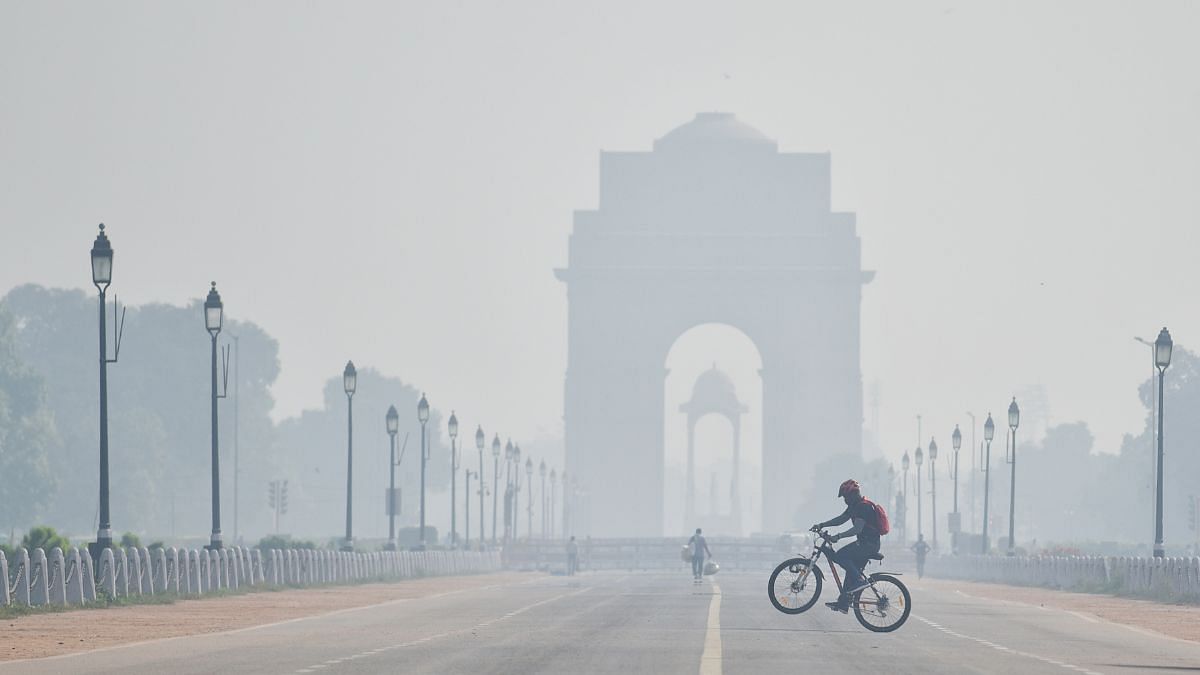New Delhi: About 33,000 deaths across 10 Indian cities each year between 2008 and 2019 can be attributed to air pollution levels exceeding the World Health Organization (WHO) guidelines, a new study has found. According to the study, even pollution levels below the current Indian air quality standards lead to increased daily mortality.
The study, published Thursday in the journal The Lancet Planetary Health, is the first multi-city study to assess the relationship between short-term air pollution exposure and death in India. It assessed PM2.5 (ultrafine particulate matter with a diameter less than 2.5 micrometres) exposure in the ten cities and the daily mortality count between 2008 and 2019.
The study found that even in cities such as Mumbai, Bengaluru, Kolkata, and Chennai, which record relatively lower pollution levels, significant numbers of deaths can be attributed to pollution exposure, pointing to the low pollution standards set by India’s monitoring agencies.
In recent years, even cities with the best air recordings have featured in global lists of the most polluted in the world. According to the World Air Quality Report 2023 released by a Swiss air quality monitoring body, India was declared the third most polluted country globally, after Bangladesh and Pakistan.
In the report’s list of the top 50 most polluted cities, 42 cities were from India.
Bhargav Krishna, a fellow at the Sustainable Futures Collaborative, a New Delhi-based independent research organisation, and lead author on the paper, said at an event during the release of the report that the findings underscore the inability of Indian states to reduce air pollution levels.
“Our analysis highlights air pollution’s substantial effects on death even in cities previously considered less polluted, such as Mumbai, Bengaluru, Kolkata and Chennai.”
He added that since it was now known that pollution levels, even below limits set by Indian pollution monitoring agencies, have deadly impacts, these agencies must take year-long action to minimise emissions.
The current Central Pollution Control Board (CPCB) standards set a daily limit of 25 micrograms per cubic metre for PM 2.5 and 50 micrograms per cubic metre for PM 10.
Also Read: Pune astronomers identify galaxy in Milky Way’s neighbourhood as ‘explosive factory’ of gamma rays
‘Urgent need to rethink air quality standards’
The study showed that between 2008 and 2019, 7.2 percent of all deaths — which was around 33,000 each year — across Ahmedabad, Bengaluru, Chennai, Delhi, Hyderabad, Kolkata, Mumbai, Pune, Shimla and Varanasi could be linked to short-term PM2.5 exposure higher than the WHO guideline value of 15 micrograms per cubic metre.
The findings also highlighted that in each instance, an increase of 10 microgram per cubic metre in short-term PM2.5 exposure was associated with a 1.42 percent increase in daily deaths. This estimate nearly doubled to 3.57 percent with specific local sources of pollution at play.
Poornima Prabhakaran, director of the Centre for Health Analytics Research and Trends (CHART) at the Trivedi School of Biosciences, Ashoka University, who was also a part of the study, told ThePrint that the findings stress the importance of revisiting the air quality standards in India.
“The insights signal an urgent need to revisit our air quality management strategies that currently focus only on ‘non-attainment cities’ (cities that failed to meet the national air pollution standards consistently for at least five years), rethink current air quality standards accounting for the lower risk thresholds, and shift from addressing regional to local sources to protect human health effectively,” she said.
Also Read: Scientists find naturally existing DNA editing tool in all life, say it increases scope beyond CRISPR
Increased focus on year-round action needed
Listing out a wide array of suggestions, researchers said that the air pollution policy in India currently focuses on ‘non-attainment cities’, which fail to meet the current Indian standards. However, since the current Indian standard for PM2.5 itself is four times the current WHO guideline value of 15 micrograms per cubic metre, people in many more regions beyond these cities are also vulnerable.
“The levels of air pollution we see in India are really extremely high, and this study clearly shows how day-to-day variations in these levels lead to considerable mortality,” Dr Petter Ljungman, associate professor at Sweden’s Karolinska Institutet, and one of the researchers involved in the study, said during the release of the report.
“Interestingly, we saw that local pollution sources are likely to be more toxic than more distant sources, which has implications for policymakers addressing this highly relevant threat to human health.”
This, the researchers said, called for an increased focus on action year-round and not just on seasonal extremes. A large proportion of mortality risk is linked with low to moderate PM2.5 levels, with risk tapering off at higher levels.
The current interventions, such as the Graded Response Action Plan (GRAP), focus on pollution extremes and must be recalibrated to focus on year-round action, according to the report.
“Develop policy instruments to better address dispersed local sources of air pollution. These are the sources most people are exposed to on a regular basis but are also the most complex to address. Doing so, however, would bring with it substantial health gains. This would require focusing not just on ambient concentrations, but those sources people are most exposed to,” it said.
(Edited by Radifah Kabir)
Also Read: Only 17% of SDG targets on track, progress stalled for over a third, says UN report

